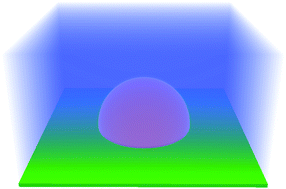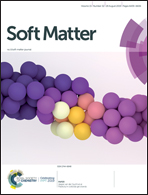The effect of the liquid layer thickness on the dissolution of immersed surface droplets
Abstract
Droplets on a liquid-immersed solid surface are key elements in many applications, such as high-throughput chemical analysis and droplet-templated porous materials. Such surface droplets dissolve when the surrounding liquid is undersaturated and the dissolution process is usually treated analogous to a sessile droplet evaporating in air. Typically, theoretical models predict the mass loss rate of dissolving droplets as a function of droplet geometrical factors (radius, constant angle), and droplet material properties (diffusion constant and densities), where the thickness of the surrounding liquid layer is neglected. Here, we investigate, both numerically and theoretically, the effect of the liquid layer thickness on the dissolution of surface droplets. We perform 3D lattice Boltzmann simulations and obtain the density distribution and time evolution of droplet height during dissolution. Moreover, we find that the dissolution slows down and the lifetime linearly increases with increasing the liquid layer thickness. We propose a theoretical model based on a quasistatic diffusion equation which agrees quantitatively with simulation results for thick liquid layers. Our results offer insight to the fundamental understanding of dissolving surface droplets and can provide valuable guidelines for the design of devices where the droplet lifetime is of importance.



 Please wait while we load your content...
Please wait while we load your content...